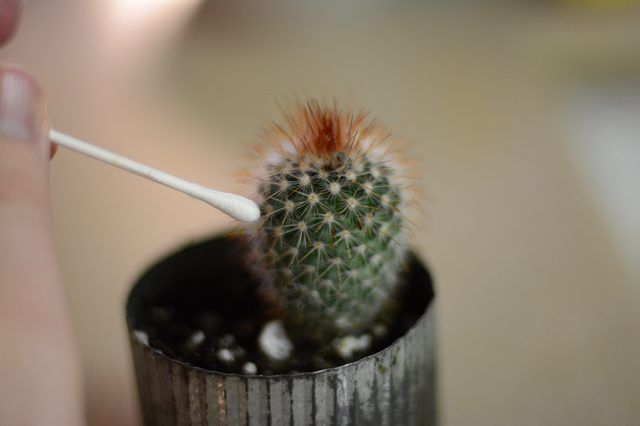Bulbs
Flower Basics
Flower Beds & Specialty Gardens
Flower Garden
Garden Furniture
Garden Gnomes
Garden Seeds
Garden Sheds
Garden Statues
Garden Tools & Supplies
Gardening Basics
Green & Organic
Groundcovers & Vines
Growing Annuals
Growing Basil
Growing Beans
Growing Berries
Growing Blueberries
Growing Cactus
Growing Corn
Growing Cotton
Growing Edibles
Growing Flowers
Growing Garlic
Growing Grapes
Growing Grass
Growing Herbs
Growing Jasmine
Growing Mint
Growing Mushrooms
Orchids
Growing Peanuts
Growing Perennials
Growing Plants
Growing Rosemary
Growing Roses
Growing Strawberries
Growing Sunflowers
Growing Thyme
Growing Tomatoes
Growing Tulips
Growing Vegetables
Herb Basics
Herb Garden
Indoor Growing
Landscaping Basics
Landscaping Patios
Landscaping Plants
Landscaping Shrubs
Landscaping Trees
Landscaping Walks & Pathways
Lawn Basics
Lawn Maintenance
Lawn Mowers
Lawn Ornaments
Lawn Planting
Lawn Tools
Outdoor Growing
Overall Landscape Planning
Pests, Weeds & Problems
Plant Basics
Rock Garden
Rose Garden
Shrubs
Soil
Specialty Gardens
Trees
Vegetable Garden
Yard Maintenance
How to Care for an Indoor Cactus
How to Care for an Indoor Cactus. Many cacti can be successful houseplants. All are succulent plants, and they have two basic kinds of growth. Forest cacti are epiphytes that grow in trees and have flattened, green, leafy-looking stems with few or no spines. Desert cacti, those of dry, hot climates, have thick stems and usually many spines. They...
Many cacti can be successful houseplants. All are succulent plants, and they have two basic kinds of growth. Forest cacti are epiphytes that grow in trees and have flattened, green, leafy-looking stems with few or no spines. Desert cacti, those of dry, hot climates, have thick stems and usually many spines. They can be globular, cylindrical, columnar or have paddle-shaped stems. An indoor forest cactus requires care different from the care an indoor desert cactus needs.
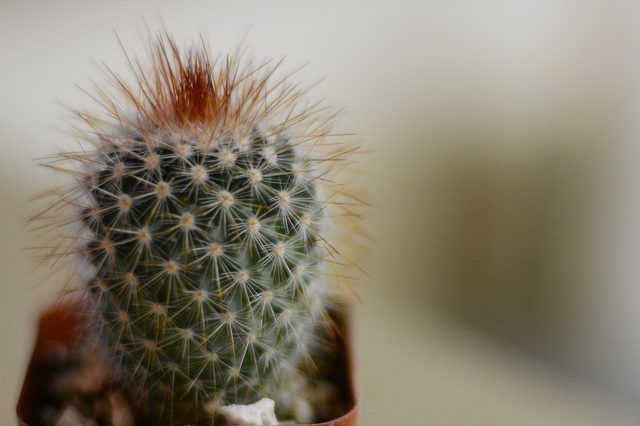
All cacti require very good drainage, but the growing medium they need varies. A forest cactus such as Christmas cactus (Schlumbergera truncata), which is hardy in U.S. Department of Agriculture plant hardiness zones 10 through 12, needs open, well-aerated soil that is rich in organic matter. A suitable growing medium for it contains 1 part commercial potting mix, 1 part perlite and 2 parts peat moss. A basic mixture for a spiny, desert cactus ensures good drainage and a high mineral content. Mix 1 part coarse sand, 5 parts perlite and 4 parts of a good-quality soilless potting mix for the spiny, desert cactus. Use pots with bottom drainage holes, and avoid overpotting by using a pot size 1 or 2 inches larger than its plant's diameter.
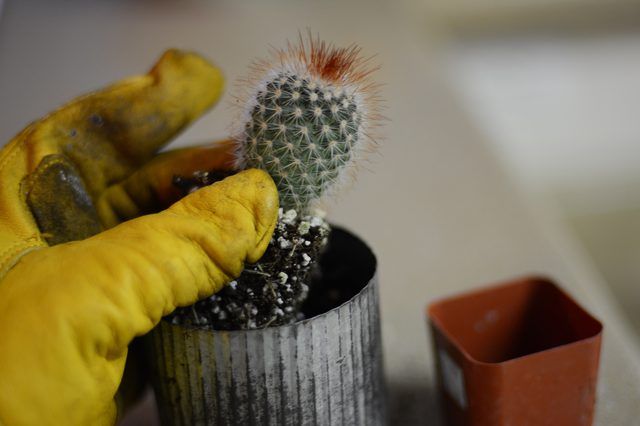
Perhaps the least understood part of cactus care is proper watering. All kinds of cacti are susceptible to rot if their roots are constantly wet, but they still need regular watering while growing in spring and summer. Allow an indoor forest cactus' growing medium surface to dry before watering it, and allow a desert cactus' top 1 to 2 inches of growing medium to dry before you water it. When you water the growing medium, do so thoroughly, to the point water runs out the pot's bottom drainage holes. If the plant is in a sunny site and in a small pot, it may need water every few days. Reduce watering in fall and winter, perhaps to every few weeks. If a saucer is under your cactus' pot, don't allow water to sit in it.
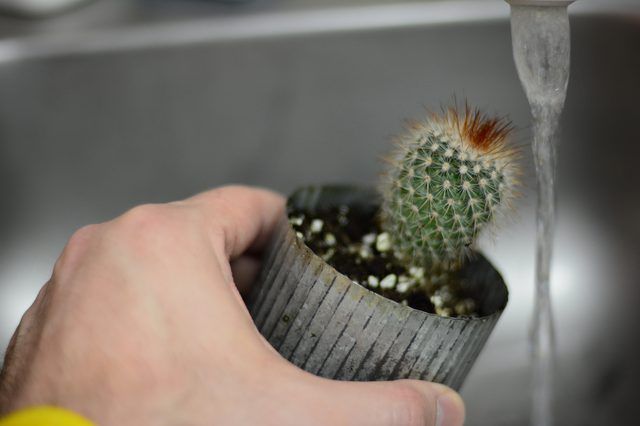
Forest cacti require bright, indirect light and can scorch in direct sunlight. Desert cacti tolerate full sun to partial shade, depending on the species. Most densely spined cacti grow best in full sun, with their many spines providing built-in shade. Keep a sun-loving desert cactus in front of a window that faces west, south or east so the plant receives some direct sunlight every day. If the desert cactus has grown in partial shade, expose it gradually to sunlight or else it can receive a sunburn.
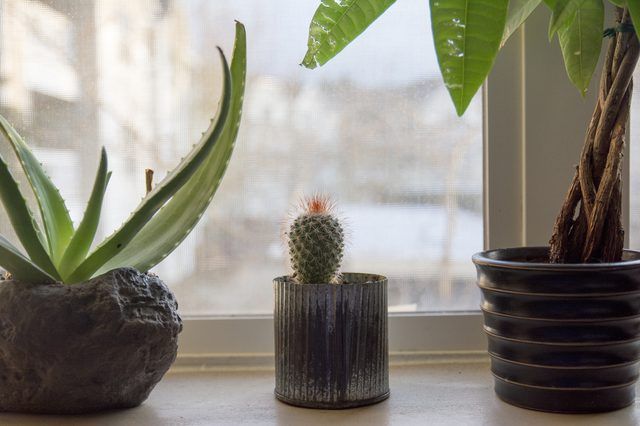
A cactus needs fertilizer regularly during its growing season, and a fertilizer low in nitrogen and high in phosphorus promotes blooming. Use a water-soluble fertilizer such as 15-30-15 at about one-half strength once each month from April to September. Mix 1 1/2 teaspoon of that fertilizer in 1 gallon of water, and water your cactus' growing medium with the mixture until it flows from the pot's bottom drainage holes.
A cactus can be pruned to remove pads, offsets or branches to keep it a certain size or to propagate it. Use pruning shears that were disinfected with a cloth dipped in rubbing alcohol to prevent plant diseases, and use disinfected kitchen tongs to handle a spiny cactus.
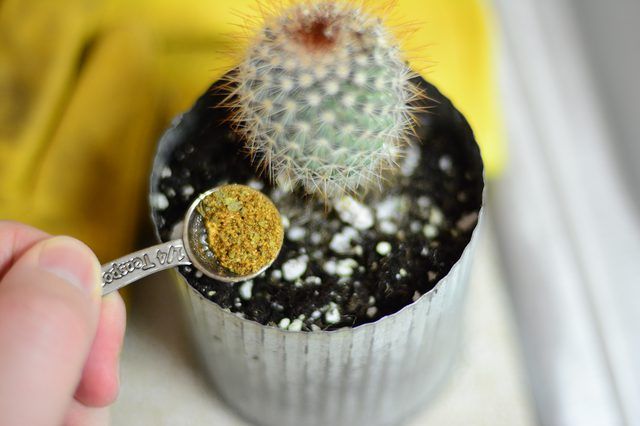
Many desert cacti need a dormant period during winter to grow and bloom well the next year. In late fall, place a dormant desert cactus in an area such as an unheated porch or bedroom that is about 45 to 55 degrees Fahrenheit. The location should have light conditions similar to those the plant is accustomed. Although many cacti are hardy outdoors year-round in USDA zones 9 through 11, hardiness varies greatly among cacti species. For instance, prickly pear (Opuntia spp.) is hardy in USDA zones 3b through 11.

Most problems associated with houseplant cacti result from overwatering, which causes fungal and bacterial rots. Prevent those issues by using well-draining soil mixes and appropriate watering practices. Sometimes cacti are infested with insects such as scales and mealybugs. Those insects are brown to white, lay flat on a plant's surface and feed on the plant's sap. As soon as you observe insects on your indoor cactus, remove them by using a cotton swab that was dipped in rubbing alcohol.
